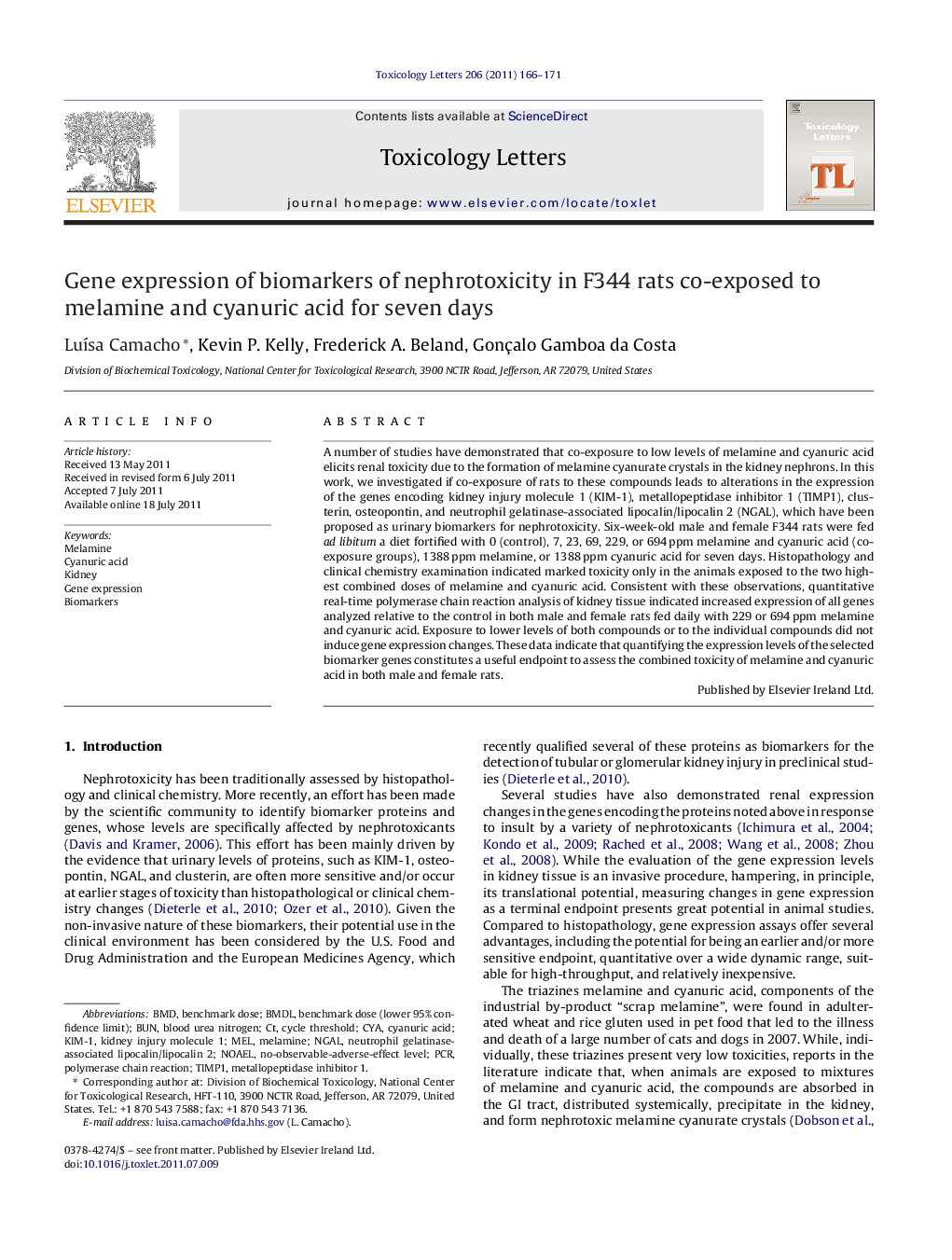| Article ID | Journal | Published Year | Pages | File Type |
|---|---|---|---|---|
| 5860803 | Toxicology Letters | 2011 | 6 Pages |
A number of studies have demonstrated that co-exposure to low levels of melamine and cyanuric acid elicits renal toxicity due to the formation of melamine cyanurate crystals in the kidney nephrons. In this work, we investigated if co-exposure of rats to these compounds leads to alterations in the expression of the genes encoding kidney injury molecule 1 (KIM-1), metallopeptidase inhibitor 1 (TIMP1), clusterin, osteopontin, and neutrophil gelatinase-associated lipocalin/lipocalin 2 (NGAL), which have been proposed as urinary biomarkers for nephrotoxicity. Six-week-old male and female F344 rats were fed ad libitum a diet fortified with 0 (control), 7, 23, 69, 229, or 694Â ppm melamine and cyanuric acid (co-exposure groups), 1388Â ppm melamine, or 1388Â ppm cyanuric acid for seven days. Histopathology and clinical chemistry examination indicated marked toxicity only in the animals exposed to the two highest combined doses of melamine and cyanuric acid. Consistent with these observations, quantitative real-time polymerase chain reaction analysis of kidney tissue indicated increased expression of all genes analyzed relative to the control in both male and female rats fed daily with 229 or 694Â ppm melamine and cyanuric acid. Exposure to lower levels of both compounds or to the individual compounds did not induce gene expression changes. These data indicate that quantifying the expression levels of the selected biomarker genes constitutes a useful endpoint to assess the combined toxicity of melamine and cyanuric acid in both male and female rats.
⺠Rats fed more than 69 ppm melamine and cyanuric acid for 7 days show renal toxicity. ⺠Candidate biomarkers of nephrotoxicity genes were up-regulated at these same doses. ⺠Quantification of these transcripts is a sensitive endpoint to assess toxicity.
